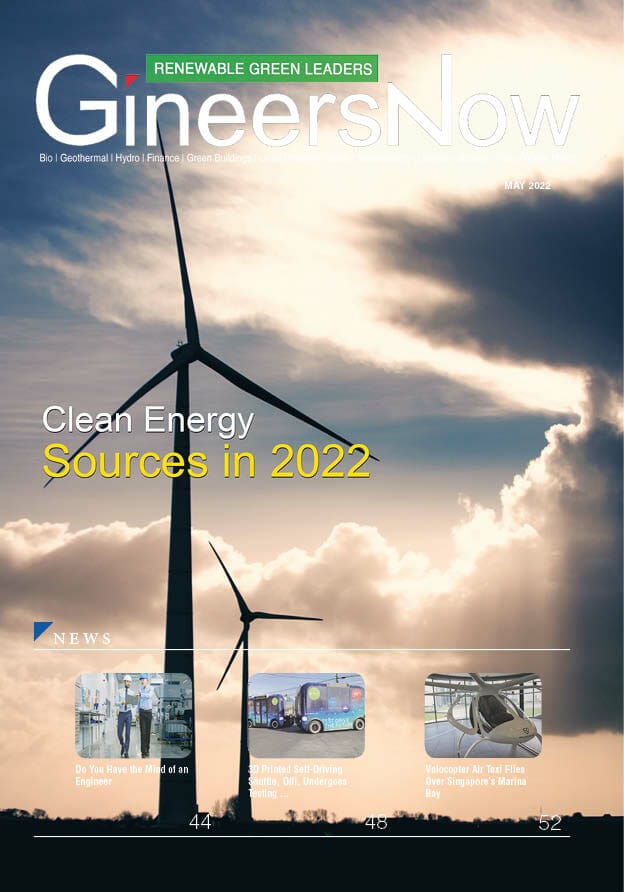Clean energy sources in 2022 meteoric rise are certain to play a critical role in 2022. Although transitioning to a totally sustainable global energy environment might take roughly 30 years, experts predict we can achieve at least 80% renewable energy output globally by 2030. We anticipate that the development accomplished in 2022 will result in a major advancement in the production of power from alternative energy sources.
While certain locations confront supply and quality issues, it is still feasible to fulfill people’s energy demands with a variety of renewable energy sources. The three primary methods for using renewable energy sources are as follows.
- On-Site Renewable Energy Production: On-site renewable energy generation may include the installation of photovoltaic (PV) solar energy panels on a building or residence, the installation of a small domestic wind turbine, and the use of geothermal heat pumps or biomass-fueled electricity and heat.
- Renewable Energy Certificates (RECs): Renewable Energy Certificates (RECs) may be used to acquire green energy. Additionally, they are referred to as renewable energy certificates, green tags, or green energy certifications.
- Green Marketing or Green Pricing Programs: Enrolling in a green energy program enables users to pay a small premium to an energy supplier that generates electricity using renewable energy sources on-site.
Clean Energy Trends to Watch in 2022
It’s a well-known fact that renewable energy is sweeping the globe. There are several alternatives; thus, what are the world’s fastest-increasing renewable energy sources? The top five fastest-growing renewable energy sources on a worldwide scale:
- Hydropower is the most frequently utilized renewable energy source on a worldwide scale, accounting for 54% of renewable energy-producing capacity. While hydroelectricity is extensively employed in the United States and other nations globally, China is now the world leader in hydroelectric generating. Hydropower harnesses the mechanical energy of flowing water to create electricity.
- Wind energy is the second most often utilized renewable energy source, behind hydropower. In the United Kingdom, onshore wind power generates around 10% of the country’s total energy, despite being the most cost-effective alternative energy source. Meanwhile, offshore wind farms, which are located in enormous bodies of water (and hence more expensive), provide electricity to around 4.5 million households in the United Kingdom.
- Solar power: Solar is the year’s fastest-growing renewable energy source and the world’s third-largest renewable energy source. The United Arab Emirates is home to the world’s biggest solar power facility. Solar energy generates enough power in this location to offset the carbon impact of 200,000 automobiles.
- Bio-energy is the fourth-largest renewable energy source. We are seeing a rise in the usage of biofuels for electricity production and heating, as well as more conventional biomass sources such as agricultural leftovers. China, the United Kingdom, and India are now world leaders in bioenergy production. Simultaneously, Brazil, Germany, the United States, and Sweden all make significant contributions.
- Geothermal energy is last but not least on the list of the world’s fastest-growing renewable energy sources. Iceland is the world’s largest generator of geothermal energy. Indonesia, Italy, Mexico, the Philippines, and the United States are among the biggest producers of geothermal energy.

Aside from the proliferation of multiple renewable energy sources, renewable energy production will rebound altogether. Due to the Covid-19 outbreak, the bulk of renewable energy projects scheduled for 2020 has been postponed. The majority of those projects will now be finished by 2021, restoring our renewable energy capacity to pre-pandemic levels. The construction of photovoltaic solar panels and onshore wind farms, as well as the completion of two massive hydropower projects in China, are the key drivers of the renewables resurgence.
Green hydrogen is also expected to grow. Green hydrogen is a fuel that is created by electrolyzing water using renewable energy sources such as solar or wind energy rather than fossil fuels. Versatility is one of the best characteristics of green hydrogen. It is available in liquid or gaseous form and may be used to generate clean power or fuel for a variety of businesses. Green hydrogen may be used in a variety of industries, including ammonia production, chemical, and fertilizer manufacture, food processing, metallurgy, oil refining, steel making, and transportation.
Even better, hydrogen is almost limitless. Around 90% of all atoms are hydrogen atoms, which means that there is more hydrogen in the cosmos than any other element. Additionally, its only waste is oxygen, making it a pollutant-free process.
For a long time, many have cited green hydrogen as a critical component in dramatically reducing global carbon dioxide emissions. Nonetheless, the cost has been a deciding issue. With renewable energy sources becoming more inexpensive, green hydrogen has become economically viable. As a result, it should take a more important position in the energy market. In fact, Australia, Chile, the EU, Germany, Japan, Saudi Arabia, and the United States Department of Energy have all committed to substantial expenditures in green hydrogen.
Read GineersNow Renewable Green Energy Magazine for FREE
Editor’s Note
Clean Energy Sources in 2022
Are renewable energy sources the future’s power? Renewable energy-generated electricity is increasing, and the trend does not seem to be slowing any time soon. In 2020, greenhouse gas emissions decreased as a result of the Covid-19 pandemic, which disrupted economic activity, travel, and commerce. This decrease may provide the push necessary to accelerate the development of sustainable energy solutions.
Even before the outbreak, alternative energy sources gained traction, another indication that sustainable energy is gaining favor. According to the US Energy Information Administration (EIA), the US will produce 40% of its electricity from non-fossil fuel sources by 2020. This is a huge increase from just five years ago when renewable energy sources accounted for less than 20% of US energy consumption. This increase suggests that we are gradually weaning ourselves off fossil fuels such as coal, petroleum, and natural gas.
It may seem audacious to aim for a completely sustainable global energy environment in less than 30 years. Nonetheless, ongoing innovation is the hidden weapon that has enabled the great advancements we have already seen. As more creative renewable energy options become available, they will become more affordable. Eco-friendly, cost-effective changes to everything from consumer marketing to infrastructure are expected.
Currently, five significant players are atop the standings for 2022. This includes hydropower, wind energy, solar energy, bio-power, and geothermal energy. While solar energy is one of the most well-known forms of renewable energy, geothermal energy may be the most dependable kind of renewable energy presently available. At two meters down, regardless of whether it is sunny or not, the temperature stays constant at 52-53 degrees Fahrenheit, which is sufficient enough to generate geothermal heat. Utilizing the ground’s steady thermal energy is also very cost-efficient, which is why it is becoming an increasingly popular alternative for customers.













